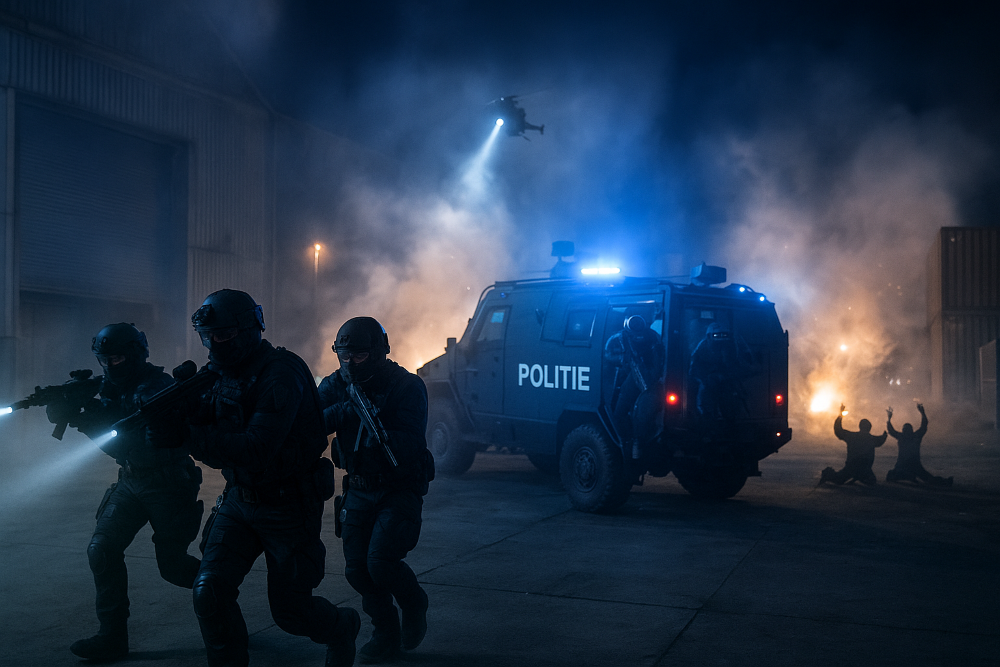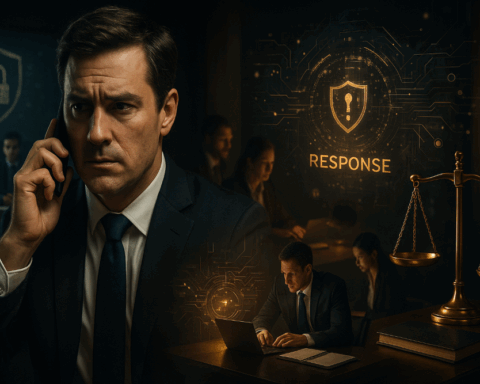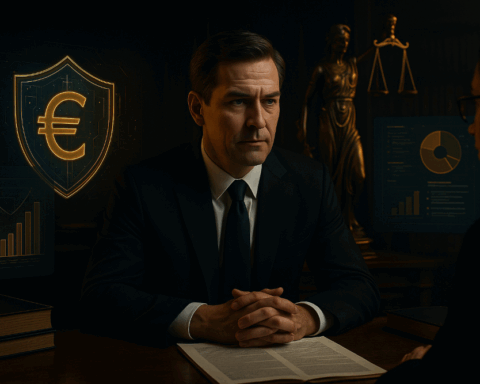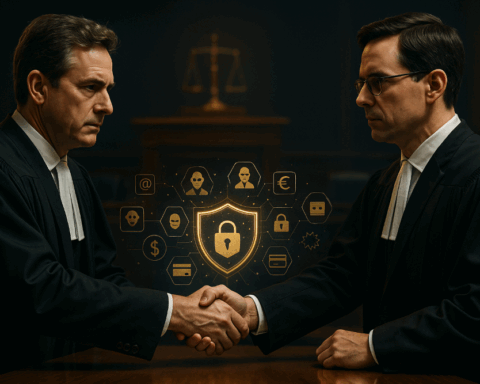Article 172 of the Municipalities Act is recognized as one of the core instruments through which public authorities can act to maintain public order. This article is not merely a formal provision on paper; it serves as the legal foundation upon which the mayor and other administrative bodies base their actions when society faces situations that threaten the normal social order. The scope of Article 172 ranges from preventive measures to immediate repressive actions and can therefore have profound consequences for both individuals and groups within society. It is an instrument that, on the one hand, aims to protect the community, but on the other hand, carries the potential to limit fundamental rights of citizens. The tension between safety and freedom presents a constant challenge for public administration and requires an exceptionally careful balancing of interests. In practice, this means that a mayor or other competent administrative body must act with a keen eye for proportionality and necessity, ensuring that every measure is carefully justified and legally defensible. This is particularly relevant in a time when undermining and organized forms of crime can affect public order in complex ways.
The application of Article 172 is therefore not a mere formality, but a strategic tool that penetrates deeply into the structure of public administration and the rule of law. When administrative bodies intervene, actions can range from issuing preventive instructions to immediately halting impending or actual disruptions of public order, with police, security services, and other agencies playing a crucial role. At the same time, such intervention requires a constant awareness of the limits set by the democratic legal order. Freedom of expression, the right of association and assembly, and the protection of private life must not be lightly sacrificed. Legal precision, combined with a deep understanding of societal dynamics, is at the core of proper and balanced action. The administration cannot exercise blind force; it must continuously demonstrate that each measure is necessary, proportionate, and effective in genuinely protecting public order. The risk of misuse or misinterpretation of Article 172 is ever-present, with potential consequences including legal proceedings and social unrest. In situations where citizens suffer harm from non-compliant conduct or even find themselves accused of violations, the toolkit provided by Article 172 becomes an essential means to prevent damage, limit escalation, and safeguard confidence in the rule of law.
General Maintenance of Public Order
The general maintenance of public order forms the foundation of Article 172. The mayor bears the primary responsibility for maintaining order under normal circumstances. This entails continuous monitoring for signs of disruption and the coordinated use of preventive and repressive measures. The municipality possesses a framework of regulations and rules that serve as guidelines for such actions, but it is ultimately the mayor who decides how these powers are applied in practice. The principle remains that every action of the administration must be aimed at protecting the community, with citizens and their rights at the center. In the context of undermining, this becomes particularly complex: organized networks can circumvent standard rules, requiring preventive enforcement to adopt a proactive, risk-based approach. Enforcement is not merely reactive; it must prevent potential disruptions before they escalate into acute incidents affecting society.
Responsibility for maintaining public order involves a broad range of tasks. The mayor must oversee compliance with existing legal provisions, act directly in the event of violations, and coordinate with police and other enforcement agencies. Actions may be both preventive and repressive: preventing incidents is as important as ending them. Moreover, the administration must carefully assess which measures are proportionate and which are not, with a thorough legal justification for each action being indispensable. In cases of undermining, this may involve measures targeting networks or individuals who structurally threaten public order, even when the threat has not yet caused direct physical harm. This requires constant risk evaluation, threat assessment, and meticulous coordination with all involved agencies.
Additionally, the general maintenance of public order is closely linked to accountability to the municipal council. The mayor must justify policies and specific actions and report on the effectiveness of measures taken. This transparency ensures that powers are not deployed arbitrarily and maintains public trust in enforcement. The mayor and municipal council together form a balance between executive capacity and democratic oversight, which is essential for the legitimacy of actions. Maintaining public order under normal circumstances is thus a complex interplay of prevention, repression, legal assessment, and administrative accountability, with every decision potentially having far-reaching consequences for the legal position of individual citizens and the stability of society.
Authority in Case of Violations of Legal Provisions
The mayor’s authority to act in cases of violations of legal provisions is a direct instrument for maintaining order and halting infringements. This authority is effectively equivalent to administrative coercion but can be exercised without the extensive procedures normally required under the General Administrative Law Act. This allows rapid and effective action when violations of rules endanger public order. It applies to violations of all legal provisions related to maintaining public order, including local regulations such as the General Municipal Ordinance. When citizens or organizations breach these rules, the mayor may issue instructions or impose measures to stop the violation, with direct action serving both preventive and repressive functions.
The exercise of this authority requires careful consideration of proportionality and necessity. It is essential that the administration thoroughly assesses the severity of the violation and its potential consequences for the community before intervening. Enforcement may be combined with criminal or administrative measures, creating an integrated approach that both corrects behavior and protects the legal order. Mayors and enforcement agencies must continuously evaluate whether direct measures are justified and whether alternative, less intrusive means are available. In the context of undermining, this may involve situations in which illegal networks ignore permits or regulations, structurally undermining public order and necessitating immediate intervention.
Furthermore, the authority to halt violations is not solely a matter of repression; it also functions as a societal signal. By acting effectively and visibly, the administration emphasizes that compliance with laws and regulations is essential for a safe and orderly society. This strengthens citizens’ confidence in the functioning of the rule of law and prevents violations from becoming normalized. At the same time, the administration must communicate carefully about the reasons for intervention and the rights of those involved, ensuring that measures are not perceived as arbitrary repression but as necessary instruments for the protection of public order and safety.
Light Command Authority
The light command authority provides the mayor with a highly flexible instrument to intervene in the face of imminent or acute disturbances of public order for which no specific legal provisions exist. This authority is intended for situations where immediate action is required to prevent or halt danger. Examples include spontaneous violence, demonstrations threatening to escalate, or other acute incidents that endanger public order. The distinction from powers based on existing regulations is essential: the light command authority fills gaps in the legal framework, allowing administrators to act in circumstances where conventional legislation does not yet provide tools. The application of this authority must always be strictly proportionate and limited to concrete, current threats.
The use of light command authority also involves criminal liability for non-compliance. The Penal Code criminalizes violation of these commands, ensuring adherence and strengthening the mayor’s enforcement power. Measures such as exclusion from certain areas, temporary residence bans, or direct instructions to individuals or groups are applied within this context. These measures are temporary and situational but can significantly prevent further escalation. The administration must carefully assess which measures are necessary and to what extent they infringe on fundamental rights to ensure the instrument is lawfully applied.
The light command authority requires constant balancing between effectiveness and proportionality. Administrative bodies must adhere to the subsidiarity principle: existing laws and regulations must be applied first. Only when these instruments prove insufficient may the mayor proceed with direct commands. This ensures that interventions remain a last resort and prevents citizens from being unnecessarily subjected to restrictive measures. In cases of undermining, this instrument can be critical to counter acute threats without requiring lengthy procedures or formal decisions, enabling rapid and targeted protection of public order.
Preventive Action
Preventive action is a central element in maintaining public order. The mayor has the authority to prevent potential disturbances before they occur. This may range from issuing instructions to individuals or groups to imposing temporary residence bans and area restrictions. Preventive action requires a sharp assessment of risks, closely monitoring signals of potential disorder, criminal undermining, or other threats. The goal is to prevent escalation and protect society from situations in which the public interest is at risk.
Preventive measures must always take proportionality and necessity into account. Immediate action without formal procedures may be justified in cases of imminent danger, but the administration must continuously consider whether less intrusive means are available. Enforcement is thus integrated with both administrative and criminal measures, allowing preventive and repressive instruments to complement each other and form a coherent whole. In situations of organized undermining, preventive action can be crucial to prevent structural harm to society, such as disrupting criminal activities or averting escalation during public events.
Effective coordination with police and other enforcement agencies is also essential. Preventive measures lose their effectiveness when not supported by supervision, compliance monitoring, and follow-up actions. The mayor must continuously monitor whether the measures achieve the intended effect and adjust them as circumstances change. Clear communication and instructions are indispensable to ensure preventive actions are purposeful and legally sound. The preventive application of Article 172 thus serves as a strategic instrument that ensures the continuity of public order while simultaneously protecting citizens from unnecessary and disproportionate restrictions.
Direct Intervention in Cases of Imminent Danger
Direct intervention in cases of imminent danger is one of the most far-reaching powers of the mayor under Article 172. This authority enables the governing body to respond immediately to concrete threats that could seriously disrupt public order in the short term. Examples include spontaneous violent incidents, riots, or threats suddenly arising during events or demonstrations. The essence of this power lies in speed and effectiveness: the administration can take measures without prior formal procedures to limit or terminate the immediate escalation of danger. This allows the administration to maintain an orderly society, even in circumstances where the threat changes rapidly and where a wait-and-see approach would be unacceptable.
The application of direct intervention requires a careful assessment of proportionality and necessity. Measures such as temporary exclusion orders, area bans, or instructions to individuals must be strictly limited to what is necessary to end the imminent danger. Each decision must be legally sound and demonstrably contribute to the protection of the community. In situations where organized undermining plays a role, such direct intervention can be essential to prevent criminal activities from escalating unchecked, thereby causing broader harm to society. The governing body faces the challenge of acting swiftly without disproportionately restricting the fundamental rights of those involved.
In addition, direct intervention requires coordinated cooperation with the police, security services, and other enforcement agencies. Effective communication and alignment are crucial to ensure that measures are implemented coherently and purposefully. This is especially true in complex situations involving multiple actors and where threats can spread in a short time. The administration must continuously evaluate whether the measures taken are adequate and adjust them if necessary to prevent escalation. Direct intervention in cases of imminent danger is therefore an instrument that provides swift protection but at the same time places high demands on legal insight, administrative responsibility, and operational coordination.
Subsidiarity of Powers
The principle of subsidiarity is a fundamental starting point in the application of Article 172. It means that the mayor must first use existing legal instruments, such as the General Local Ordinance or other relevant regulations, before resorting to direct intervention or the use of the light order authority. This ensures that the administration does not intervene unnecessarily and that restrictions on fundamental rights are always proportional and necessary. The subsidiarity principle protects citizens against arbitrary measures and at the same time strengthens the legitimacy of public administration actions.
When weighing alternatives, the mayor must continuously evaluate the effectiveness, proportionality, and necessity of each measure. In many cases, existing regulations may be sufficient to control a threat. Only when these means prove inadequate, or when a threat escalates acutely, may direct orders or other intrusive measures be imposed. This requires sharp legal insight and a thorough analysis of the situation, ensuring that action does not go further than strictly necessary. In the context of organized undermining, this is of particular importance: structural threats demand an integrated approach in which preventive, repressive, and coordinating measures are aligned.
Subsidiarity is also closely linked to the governing body’s assessment of proportionality and necessity. The mayor must always weigh whether an intervention is proportionate to the intended objective and whether less intrusive alternatives are available. Through this internal review, it is ensured that Article 172 is not used as an instrument of convenience but as a carefully considered means of protecting society. The result is a balanced application of powers that maintains public order and safety on the one hand, and respects the rights of citizens on the other.
Coordination with the King’s Commissioner
Coordination with the King’s Commissioner is an important mechanism within Article 172, especially in cases of public order disturbances that transcend the local framework and take on a regional character. The King’s Commissioner may, in such situations, issue instructions to the mayor without transferring the mayor’s authority. This ensures a coordinated and uniform approach to incidents affecting multiple municipalities or potentially impacting national security interests. The role of the King’s Commissioner is primarily advisory and coordinating, ensuring that public administration actions remain consistent and proportionate.
In cases of serious public order disturbances, consultation with the King’s Commissioner is essential to prevent escalation. This may apply, for example, in the case of organized criminal activities affecting a wider area or when there is a risk that local measures will be insufficient. The mayor retains operational authority but incorporates the Commissioner’s instructions into decision-making. This cooperation strengthens regional coordination and ensures that the actions of different municipalities remain aligned with national enforcement strategies and security protocols.
Coordination with the Commissioner requires not only legal insight but also operational and communication skills. It is crucial that the mayor can integrate the Commissioner’s instructions without undermining the effectiveness of local measures. This demands continuous coordination with the police, security services, and other involved agencies to ensure that measures are implemented effectively, proportionately, and in a timely manner. The aim is always to maintain public order, prevent escalation, and safeguard the rule of law while balancing local interests with regional security needs.
Criminalization of Order Violations
The criminalization of violations of orders is an essential instrument under Article 172, ensuring compliance with the measures imposed by the mayor in situations of imminent or acute public order disturbances. Orders may be directed at individuals or groups and can include measures such as exclusion orders, area bans, or direct instructions to citizens. By criminalizing violations under Article 184 of the Criminal Code, enforcement becomes effective, and the public is made aware of the legal consequences of non-compliance. This reinforces the effectiveness of both preventive and repressive measures.
Imposing criminally enforceable orders requires a careful assessment of proportionality and necessity. Measures must directly contribute to ending the threat and must not go beyond what is strictly necessary to maintain public order. In cases of organized undermining, imposing such orders can be crucial to preventing acute escalation, curbing the networks involved, and protecting citizens from harm caused by criminal activities. The governing body must communicate clearly about the nature of the measures, their duration, and the legal consequences of violations.
In addition, enforcement of these orders must always take place in cooperation with the police and other enforcement agencies. Only through effective implementation and supervision can compliance be guaranteed. The instrument of criminalization is therefore not a standalone tool but part of an integrated system of preventive and repressive measures that enables the mayor to safeguard public order. Through careful application, the instrument remains proportionate, legally sound, and effective in situations involving imminent or actual disturbances.
Accountability to the Municipal Council
Accountability to the municipal council is a crucial mechanism within Article 172, ensuring transparency and democratic oversight. The mayor must account for policy measures, enforcement actions, and preventive interventions, allowing the council to assess whether the actions taken are proportionate, necessary, and effective. This accountability extends to both preventive measures and repressive actions and includes evaluation of the effects of the light order authority and direct interventions. The aim is to prevent the administration’s powers from being exercised arbitrarily or disproportionately.
The municipal council plays an important role in reviewing policy and monitoring implementation. By reporting on concrete actions, results, and effects, the council can assess whether the measures taken comply with legal requirements and democratic principles. This not only promotes transparency but also strengthens the legitimacy of governance. Citizens are indirectly assured that their rights are protected and that public order is maintained in a fair manner.
Moreover, accountability is an instrument for continuous evaluation and adjustment. The mayor must assess whether measures are effective and, where necessary, adapt them to changing circumstances. This is particularly important in cases of organized undermining or complex threats, where public interests and individual rights must be constantly balanced. Through strict accountability, Article 172 remains an instrument that both protects and is subject to oversight, ensuring that the maintenance of public order is always subject to democratic scrutiny and legal review.
Direct Enforcement and Compulsory Administrative Action
Direct enforcement and compulsory administrative action represent the culmination of the instruments provided by Article 172 to protect public order. These powers enable the mayor to respond immediately to violations of legal provisions or to threats that pose an acute danger to society. This involves not only issuing orders but also actively implementing measures to end or prevent a disruption of order. The range of tools extends from instructions to individuals to area bans, residence prohibitions, and coordination with the police and other enforcement agencies. Direct action can be both preventive and repressive, making it a crucial link in the enforcement arsenal of local government.
The compulsory nature of certain measures implies that the mayor can not only issue orders but also proceed with actual enforcement, such as removing objects that cause disturbances or closing locations that threaten public order. This tool is particularly important when citizens or organizations fail to comply voluntarily with instructions or when a threat must be immediately neutralized. In situations of organized undermining, this authority provides the opportunity to directly address structural risks, preventing harm to society and potential escalation. However, the use of compulsory measures requires a constant assessment of proportionality, necessity, and legal justification to ensure that citizens’ rights are not unnecessarily infringed.
Moreover, direct enforcement requires intensive coordination with all involved entities, including the police, security services, and other municipal departments. Effective implementation of compulsory administrative measures is only possible when supervision, compliance, and enforcement are organized in an integrated manner. Preventing escalation is central: by acting timely and appropriately, public order is maintained and citizens are protected from direct and indirect harm caused by non-compliant behavior or criminal activities. Integration with other emergency and enforcement instruments, such as Articles 175 and 176 of the Municipal Act, ensures that direct enforcement is not isolated from the broader security framework but functions as a coordinated, proportionate, and legally justified means of protecting society.









